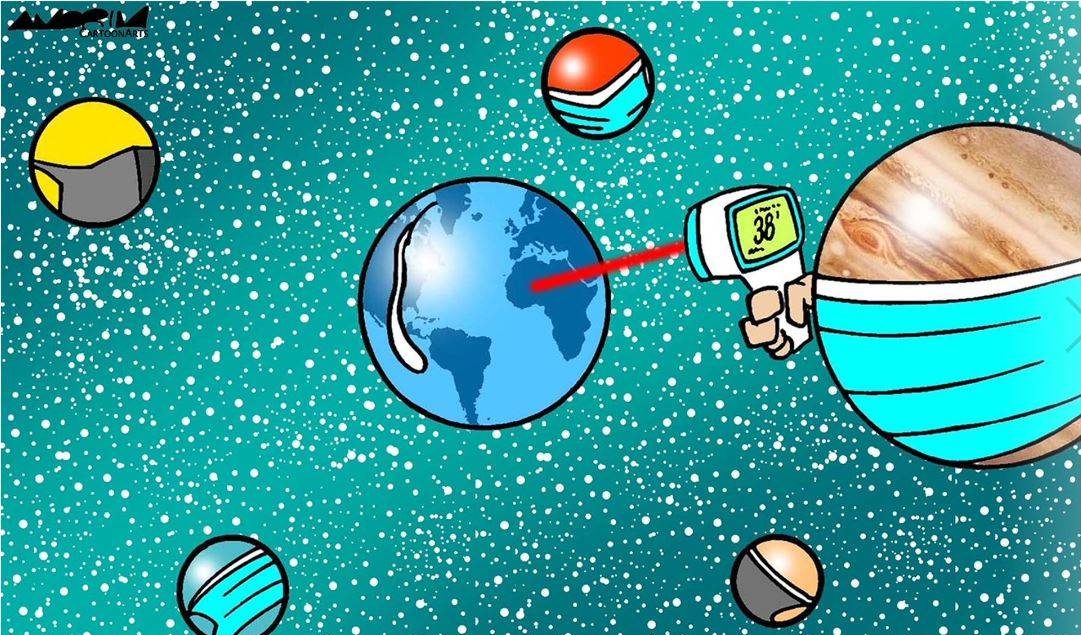RIO DE JANEIRO, BRAZIL – The UN’s Intergovernmental Panel on Climate Change (IPCC) report released Monday, August 9, the most important since 2014, shows unequivocally that global warming is proceeding faster than expected and that virtually all of it is a consequence of human activity.
Here are some of the report’s key points:
GOODBYE, 1.5 ºC, HELLO OVERHEATING
By 2030, the average global temperature is expected to be 1.5°C or 1.6°C higher than pre-industrial-era levels under the five scenarios for greenhouse gas emissions–evolving from the most optimistic to the most pessimistic–considered in the report. This would be a decade earlier than the IPCC predicted just three years ago.

By mid-century, the +1.5°C threshold will have been exceeded in all scenarios: the most optimistic prediction will be exceeded by 0.10°C and the most pessimistic, by 1.0°C.
There remains, however, a silver lining: assuming that absolutely everything is done to combat climate change, the global temperature, after having risen by 1.5 ºC, will be 1.4 ºC higher than in the pre-industrial era by 2100.
NATURAL ALLIES, WEAKENED
Since about 1960, forests, soils, and oceans have absorbed 56% of the CO2 that humankind has released into the atmosphere, even though these emissions have increased by 50%. Without nature’s help, the Earth would be a much hotter and more inhospitable place than it is now.
But those allies – known as carbon sinks – are showing signs of being saturated, and the percentage of CO2 they absorb is expected to fall as time goes on.
The report highlights the surprising progress of a new field, “attribution science,” to quantify the extent to which man-made global warming increases the intensity and/or likelihood of an extreme weather event, such as a heatwave, hurricane, or wildfire.
For example, in a few weeks, scientists established that the heatwave that hit Canada in June, with record temperatures, would have been “almost impossible” without the influence of climate change.
RAPIDLY RISING SEA LEVELS
Global ocean levels have risen by about 20 cm since 1900, and the growth rate has nearly tripled in the last decade. Melting ice sheets in Antarctica and Greenland are now the main concern, ahead of glacier melt.
If global temperatures rise by 2°C, ocean levels will rise by about half a meter in the 21st century. They will continue to rise almost two meters by 2300, double what the IPCC predicted in 2019.
Because of the uncertainty attached to the ice sheets, scientists cannot rule out a water level rise of up to two meters by 2100.
ALARMING LESSONS FROM THE PAST
Important advances in paleoclimatology (the science that studies the Earth’s climatic characteristics throughout history) have set off some alarm bells.
For example, the last time the planet’s atmosphere was as hot as it is now, was about 125,000 years ago, and the sea level was about 5 to 10 meters higher, which would submerge most coastal cities today.
Three million years ago, when atmospheric CO2 concentrations matched today’s levels and temperatures were between 2.5°C and 4°C higher, sea level was up to 25 meters higher than it is today.
METHANE, IN THE SPOTLIGHT
The report includes more data than ever on methane (CH4), the second most important greenhouse gas after CO2, and warns that failure to reduce emissions will cause not meeting the targets set out in the Paris Agreement.
Man-made sources are divided between leaks from natural gas production, coal mines and landfills on the one hand, and livestock and manure on the other.
CH4 stays in the atmosphere for less time than CO2 but has much greater warming power. Current CH4 levels are the highest recorded in the last 800,000 years.
REGIONAL DIFFERENCES
Although all parts of the planet–from the oceans to the land to the air we breathe–are warmer, some areas are warming faster than others. In the Arctic, for example, the average temperature increase on the coldest days is projected to be three times the global average for the planet.
Sea levels are also rising everywhere, but they are likely to rise 20% above average on many coasts.
TIPPING POINTS
The IPCC does not rule out “tipping points” in the climate system, i.e., abrupt changes of “low probability but major impact” that are irreversible.
These include the disintegration of ice caps with enough water to raise sea levels by dozens of meters, the melting of permafrost that locks up immense volumes of carbon, or the transformation of the Amazon rainforest into a savanna.
ATLANTIC CURRENTS
The Atlantic Meridional Overturning Circulation (AMOC) — a system of ocean currents that regulate the global transit of temperature from the tropics to the northern hemisphere — is slowing, a trend that will most likely continue for the rest of the century.
Scientists show only “medium confidence” that this system will not collapse completely, as it has in the past.
If it did, European winters would be much harsher, and there would be disruptions to the monsoons in Africa and Asia and a rise in sea level in the North Atlantic.

